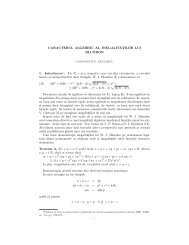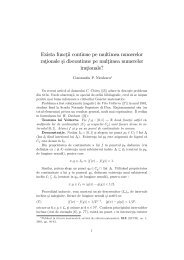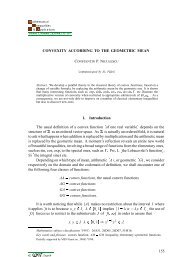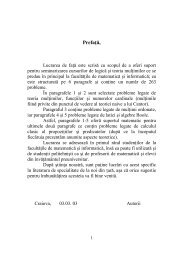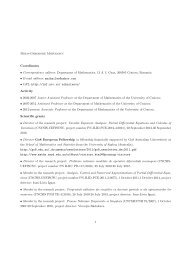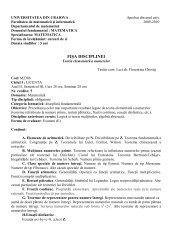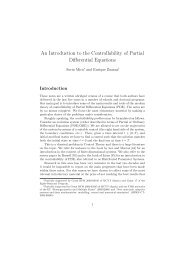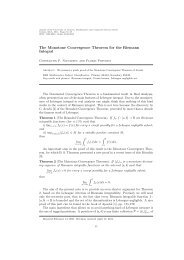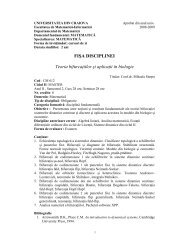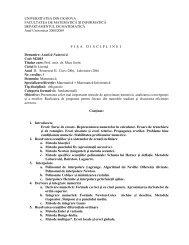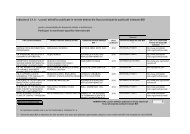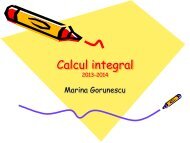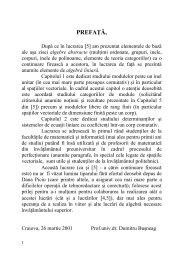PROBLEMS AND SOLUTIONS
PROBLEMS AND SOLUTIONS
PROBLEMS AND SOLUTIONS
You also want an ePaper? Increase the reach of your titles
YUMPU automatically turns print PDFs into web optimized ePapers that Google loves.
Let T (a, b, c, d, n) be the (n + 1)-by-(n + 1) matrix with (i, j)-entry given by t i, j , fori, j ∈ {0, . . . , n}. Show that det T (a, b, c, d, n) = (ad − bc) n(n+1)/2 .11653. Proposed by Finbarr Holland, University College Cork, Cork, Ireland. Let nbe a positive integer. Determine all entire functions f that satisfy, for all complex sand t, the functional equationf (s + t) =∑n−1k=0Here, f (m) denotes the mth derivative of f .f (n−1−k) (s) f (k) (t).11654. Proposed by David Borwein, University of Western Ontario, Canada, andJonathan M. Borwein and James Wan, CARMA, University of Newcastle, Australia.Let Cl denote the Clausen function, given by Cl(θ) = ∑ ∞n=1 sin(nθ)/n2 . Let ζ denotethe Riemann zeta function.(a) Show that∫ 2π ∫ 2πy=0(b) Show that∫ πy=0x=0∫ πx=0log(3 + 2 cos x + 2 cos y + 2 cos(x − y)) dx dy = 8πCl(π/3).log(3 + 2 cos x + 2 cos y + 2 cos(x − y)) dx dy = 283 ζ(3).11655. Proposed by Pál Péter Dályay, Szeged, Hungary. Let ABCD be a convexquadrilateral, and let α, β, γ , and δ be the radian measures of angles DAB, ABC, BCD,and CDA, respectively. Suppose α + β > π and α + δ > π, and let η = α + β − πand φ = α + δ − π. Let a, b, c, d, e, f be real numbers with ac = bd = ef . Showthat if abe > 0, thena cos α + b cos β + c cos γ + d cos δ + e cos η + f cos φ ≤ be2a + cf2b + de2c + a f2d ,while for abe < 0 the inequality is reversed.<strong>SOLUTIONS</strong>A Triangle Inequality11527 [2010, 742]. Proposed by Cezar Lupu, student, University of Bucharest,Bucharest, Romania. Prove that in an acute triangle with sides of length a, b, c,inradius r, and circumradius R,a 2b 2 + c 2 − a 2 + b 2c 2 + a 2 − b 2 + c 2a 2 + b 2 − c 2 ≥ 3 2 · Rr .Solution by Thomas Smotzer, Youngstown State University, Youngstown, OH. Let△ABC be acute, with side lengths a, b, c, area K , and semiperimeter p. Let S =S(a, b, c) be the sum on the left in the required inequality. Note that K = 1 bc sin A,2June–July 2012] <strong>PROBLEMS</strong> <strong>AND</strong> <strong>SOLUTIONS</strong> 523



